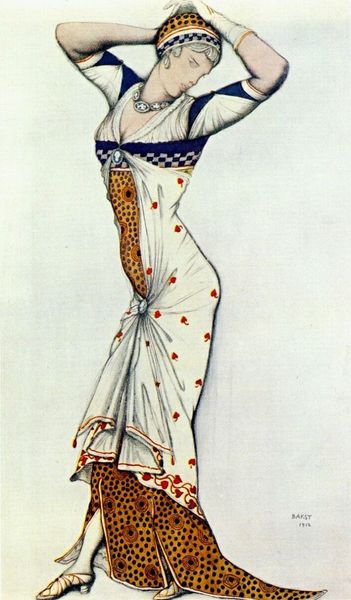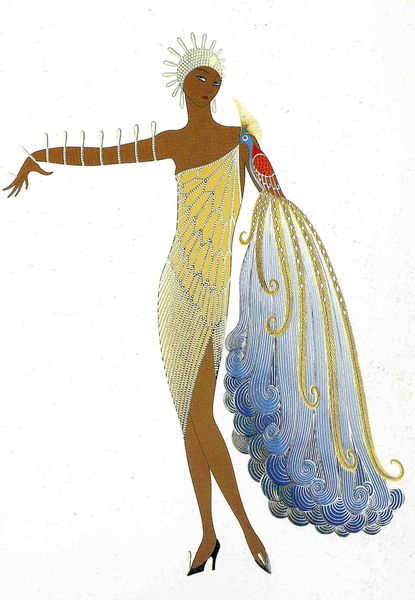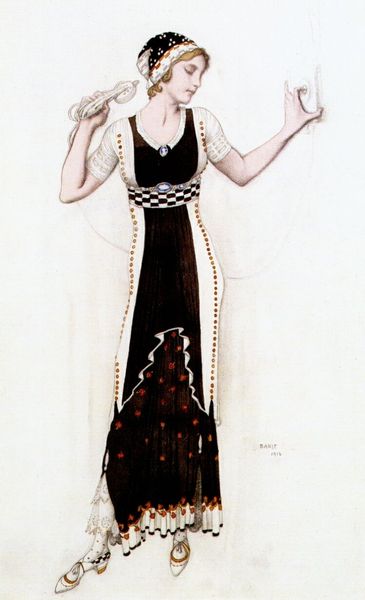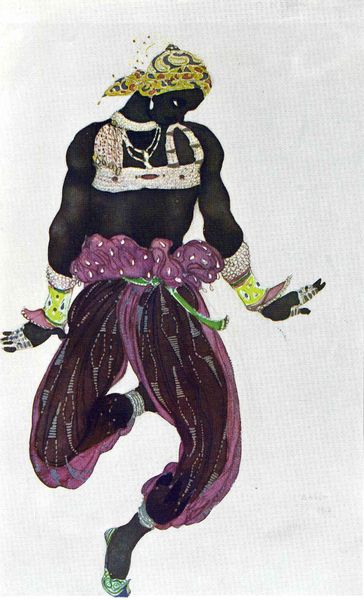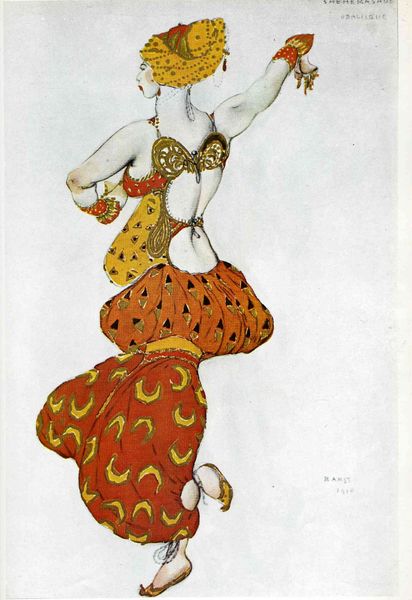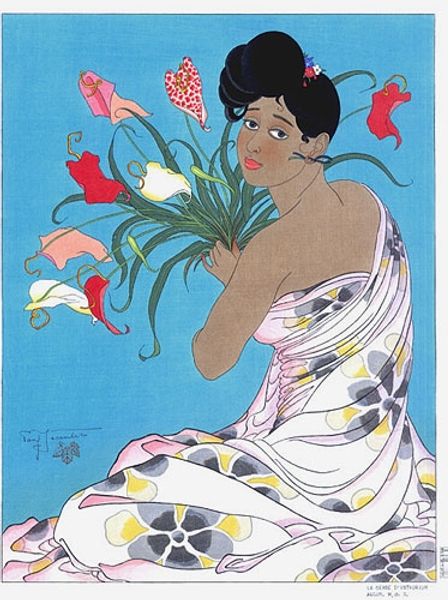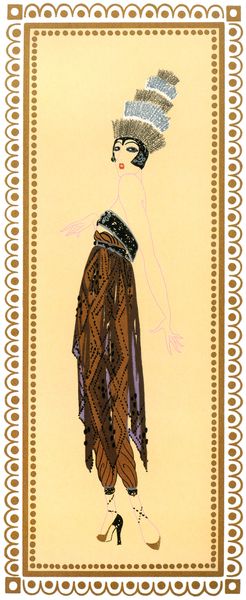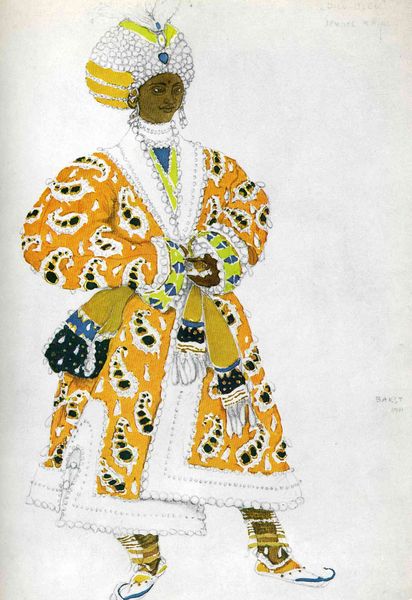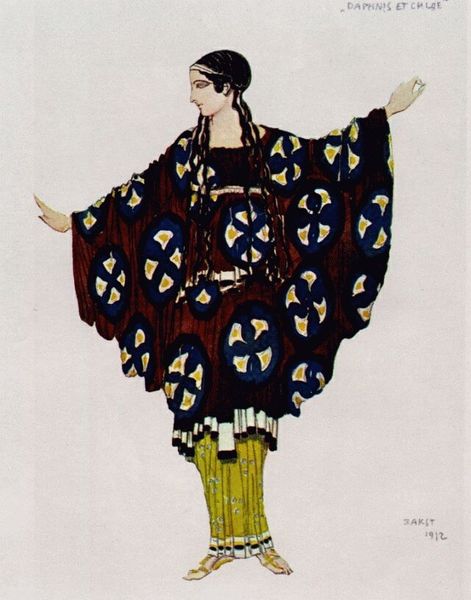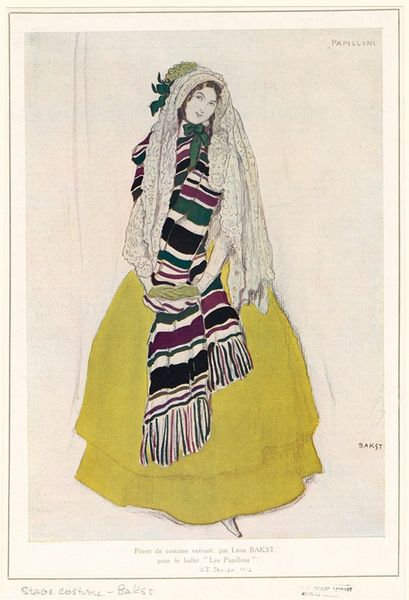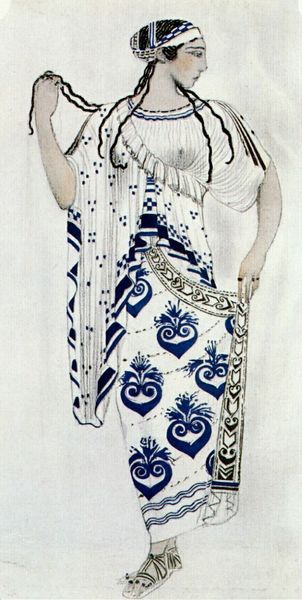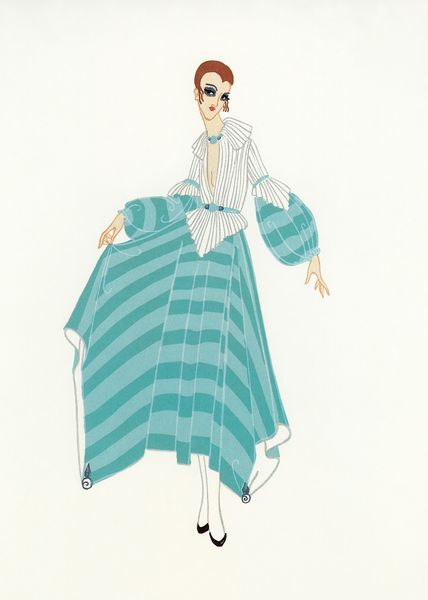
drawing, watercolor
#
portrait
#
drawing
#
watercolor
#
costume
#
symbolism
#
watercolour illustration
#
watercolor
Copyright: Public domain
Editor: This is Léon Bakst’s “Le dieu bleu a pilgrim,” created in 1912 using watercolor and drawing techniques. It’s quite striking, with the figure’s skin tone contrasting so vividly against the patterned clothing. I’m intrigued by how the almost hypnotic patterns seem to vibrate against the solid blocks of color. What first strikes you when you look at it? Curator: It’s the visual vocabulary itself, isn't it? Bakst uses color not just to depict but to *symbolize*. Notice how the repeated circles edged in red punctuate the pilgrim's robe. Red often embodies vitality, passion, or even sacrifice. Do these embedded connotations echo in the blue deity’s narrative? Editor: Possibly. I hadn't considered the implications of the colours beyond aesthetics. He is, after all, *Le dieu bleu,* the blue god. Curator: Exactly. Blue historically is associated with spirituality, peace, truth, and the divine. Given this figure is a pilgrim – a wanderer – do you see a tension between the idea of grounded reality, reflected in the 'earthy' reds, with spiritual aspiration represented by the overarching blueness? Is Bakst suggesting the human and the divine are forever intertwined in pilgrimage? Editor: That’s a compelling perspective! I was caught up in the visual aspect. I missed how Bakst uses color symbolism to add such profound layers of meaning. Curator: Art is often a fusion. The brilliant patterns also echo a visual language derived from orientalism and theatrical costuming from this period, don’t they? These shapes and colors trigger cultural memory. How can this visual language reveal a narrative on cultural exchange, both sincere and exploitative? What purpose does each stroke of watercolor perform in the final act? Editor: It definitely gives me a new framework to understand Bakst's approach. I thought it was mainly decorative, but now it appears much more intricate. Curator: It becomes something transformative. Understanding the symbolic underpinnings and cultural references lets us peel away at the layers Bakst intentionally created for his audience.
Comments
No comments
Be the first to comment and join the conversation on the ultimate creative platform.
